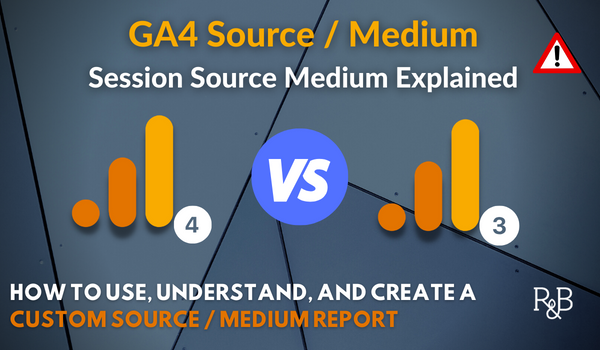Comprehending Secondary Dimensions in Google Analytics: Definition and Tactical Integration
Comprehending Secondary Dimensions in Google Analytics: Definition and Tactical Integration
Blog Article
Optimizing Your Data Analysis With Additional Measurement in Google Analytics for Informed Decision-Making
Google Analytics, an effective device in the hands of electronic marketers and analysts, offers a feature known as Secondary Dimension. By tapping into the capabilities of Secondary Dimension, users can obtain an extra thorough sight of their information, allowing them to make strategic decisions based on an extra nuanced and thorough analysis.
Comprehending Additional Dimension Capability
Comprehending the secondary measurement functionality in Google Analytics boosts the depth of data evaluation by offering added context to primary metrics. By integrating a second dimension, experts can segment and compare information, getting understandings that would certainly or else remain hidden. This feature allows customers to check out information with various lenses, such as the source of website traffic, user actions, or geographical location, offering a more thorough understanding of web site performance.
Utilizing second dimensions can reveal patterns and connections that may not appear when looking exclusively at main metrics. Combining the primary metric of web page sights with a secondary measurement like tool classification can discover whether particular devices drive more website traffic to details web pages. This info can after that educate internet site optimization approaches customized to various device users.
Carrying Out Second Measurement in Records
Structure upon the insights acquired with additional measurement evaluation, including these measurements effectively into reports in Google Analytics is critical for extracting actionable data-driven choices. what is a secondary dimension in google analytics. By executing additional measurements in records, users can delve deeper into the performance metrics of their site or app. This function enables an extra thorough evaluation by providing additional context to the primary dimension chosen
To apply a second measurement in reports, simply navigate to the preferred record in Google Analytics and click the "Second measurement" tab located above the data table. From there, individuals can select from a variety of secondary dimensions such as 'Source/Medium', 'Device Category', or 'Landing Page'. Choosing the most appropriate additional dimension will depend upon the certain understandings you are seeking to discover.
Using additional dimensions in reports not only boosts the deepness of evaluation yet additionally help in identifying trends, patterns, and correlations that may have otherwise gone undetected. This calculated method to data analysis allows companies to make educated decisions that drive growth and success.

Studying Data With Secondary Measurements
Upon integrating secondary dimensions into data analysis within Google Analytics, a comprehensive assessment of crucial efficiency signs can be accomplished, using useful understandings for calculated decision-making. By using additional dimensions, analysts can further explore their primary data measurements, such as website traffic resources or individual demographics, to discover patterns or trends that may not be immediately apparent. This much deeper degree of evaluation enables for a much more extensive understanding of user behavior and communications on an internet site or electronic platform.
Evaluating data with second measurements makes it possible for marketers and website proprietors to respond to more details inquiries concerning their audience, content performance, and advertising and marketing initiatives. By incorporating the key dimension of traffic sources with an additional dimension like geographical place, companies can identify which regions drive the most valuable traffic to their website. This kind of granular understanding can educate advertising and marketing methods, material creation, and website optimization efforts to better cater to the needs and choices of their target market.
Leveraging Additional Measurements for Insights
By including second measurements successfully, analysts can extract much deeper understandings from data collections in Google Analytics, enhancing the understanding of customer actions and efficiency metrics. Leveraging secondary dimensions includes combining different features or metrics with primary data to discover patterns and fads that may not appear in the beginning look. As an example, by adding an additional measurement such as 'Tool Group' to a record on website traffic, analysts can determine whether customer actions varies across different gadgets like you can look here desktop computers, mobile phones, or tablets.
Additionally, using additional measurements permits experts to sector information a lot more granularly, allowing them to recognize details target market sectors or geographic locations that exhibit distinctive actions. what is a secondary dimension in google analytics. This division can be important in tailoring advertising methods, enhancing web site content, or improving user experience based on the unique qualities of each section
Fundamentally, leveraging secondary dimensions in Google Analytics equips experts to delve much deeper right into data, derive purposeful understandings, and make educated choices that drive organization growth and success.
Enhancing Decision-Making Via Additional Measurements
Making use of second dimensions in information analysis offers a strategic advantage by uncovering actionable insights that drive educated decision-making in Google Analytics. By enhancing decision-making via secondary dimensions, customers can delve deeper into their information to remove beneficial details that might not be promptly apparent. These additional dimensions provide an even more detailed sight of individual behavior, communications, and end results, enabling analysts to make more enlightened choices based on concrete information.
Through the application of second measurements, experts can sector and filter data to identify patterns, patterns, and correlations that might influence decision-making procedures. This enhanced level of granularity permits a more targeted technique to analyzing data, bring about more informative and accurate final thoughts.
Moreover, additional measurements offer the possibility to compare different information factors side by side, promoting a more detailed assessment of efficiency metrics and KPIs. By leveraging additional measurements effectively, services can optimize their approaches, enhance customer experiences, and ultimately attain their goals with self-confidence.
Conclusion

Building upon the understandings acquired through secondary measurement analysis, including these dimensions successfully into records in Google Analytics is vital for removing actionable data-driven choices.To apply a secondary measurement in records, simply browse to the wanted report in Google Analytics and click on the "Second dimension" tab situated over the information table. By utilizing second dimensions, experts can better dissect their key data dimensions, such as web traffic resources or user demographics, to discover patterns or fads that may not be quickly evident. By incorporating the main measurement of web traffic resources with a second dimension like geographical place, her comment is here services can recognize which regions drive the most useful website traffic to their site.By incorporating second dimensions successfully, experts can remove much deeper insights from data sets in Google Analytics, improving the understanding of customer habits and efficiency metrics.
Report this page